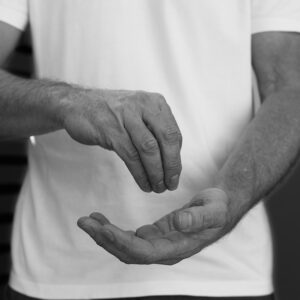29 Mar Why the 8-Step Tai Chi Form is Ideal for the Coronavirus Lockdown

Although it was created in 1999 to make Tai Chi more accessible to the Chinese population, there are many aspects of the 8-Step form that make it especially suited to the physical and social limitations of the current situation.
1Requires only a Small Space
If you have enough space to hold your arms outstretched in all directions and are able to take a step to the left and to the right then you have enough room to do the 8-Step Tai Chi form. So this is an ideal form of exercise if you are quarantined or self-isolating.
2Requires No Equipment
Tai Chi requires no special equipment, no expensive clothing. Just take your shoes off, wear something comfortable and you are ready to go. It costs nothing to get started and you don’t have to wait for an Amazon delivery – you can start now.
3Suitable for Everyone
Tai Chi is suitable for all ages and fitness levels. It will not make you breathless and sweaty and you will not be putting your dodgy knees or aching back at risk. So it is a great way for everyone (including the senior population) to exercise and stay healthy.
4Designed for the Internet Age
The 8-Step form of Tai Chi was designed to be taught to big groups of villagers in rural China with a teacher at the front of the group. So, unlike other Tai Chi forms, the 8-Step has moves that face forwards most of the time: a turn to the left or right is followed by a return to the front to see the teacher or, just as easily, a screen.
5Easy to Learn
Traditional Tai Chi forms are lengthy, complicated sequences of moves that take months of diligent practice to learn. As its name implies, the 8-Step form is much simpler, with moves repeated on each side making it easier to remember the sequence.
All of the moves are selected from longer versions of Tai Chi, so this form is by no means a dumbed-down version – it still retains essential challenges and classic movements. For those with more experience of Tai Chi, this form is also a very effective warm-up for longer forms.
6Improves Breathing Capacity
All Tai Chi (and Qigong) is based on slow, relaxed, rhythmic breathing coordinated with the movements. Paradoxically, it is a form of breathing that reduces breathlessness in more energetic activities. Recent tests showed that Tai Chi produced similar levels of fitness to Zumba classes.
7Boosts the Immune System – Reduces Stress, Anxiety and Improves Mental Health
The benefits of slow breathing go well beyond the reduction in breathlessness. Slow breathing helps move the body’s central nervous system out of the fight-or-flight mode into rest-and-recover mode. It improves mental health by reducing stress and anxiety levels, encouraging a state of mindfulness. Our immune system’s ability to fight infections like coronavirus is seriously compromised by high levels of stress, so anything that helps to alleviate stress will allow the immune system to mount a stronger defence.
8Mobilises the Joints, Strengthens Key Muscle Groups, Improves Balance and Coordination
As we age, we tend to lose muscle strength, mobility and our sense of balance. The 8-Step Tai Chi form contains movements to address all three areas – helping to strengthen the key muscle groups of the legs and the buttocks, improve mobility of the all the joints and build balance and controlled movement.








No Comments